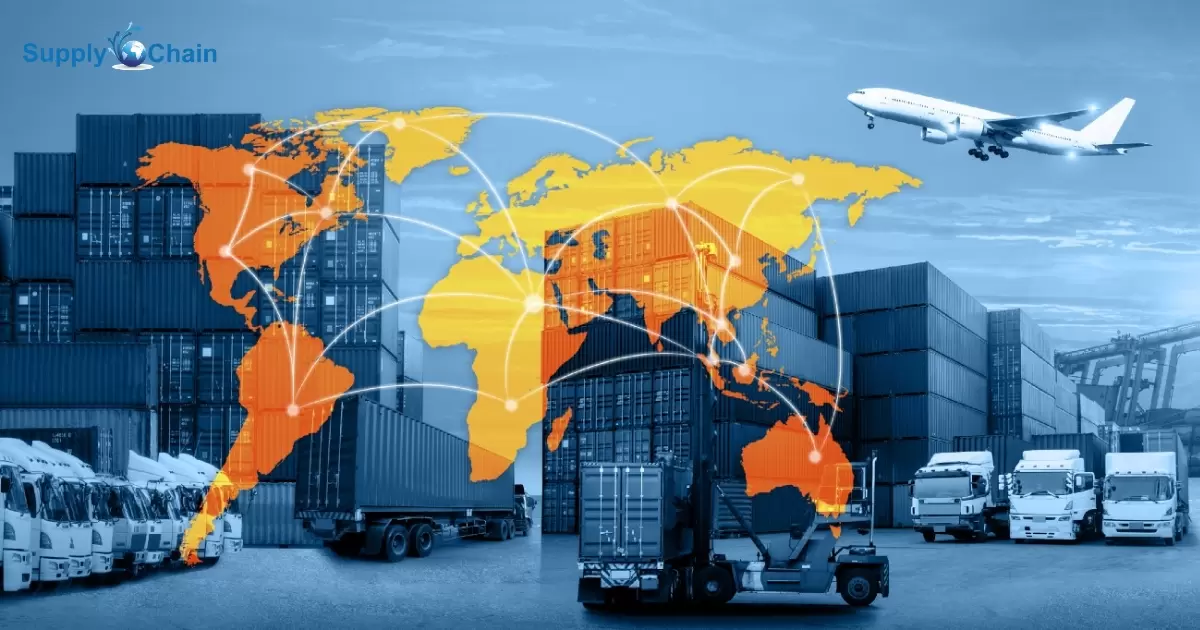Global supply chain with offshoring is when companies produce or get parts for their products from different countries. Imagine your favorite toy. Its parts might come from China, and assembly could happen in Mexico. This helps companies save money but can be risky if something goes wrong, like delays or political issues in other countries.
Companies scatter the making of their products across the globe, like a well-traveled recipe. Parts from one place, assembly from another, it’s the strategy that keeps the wheels turning and costs down. Curious about the wizardry behind A Global Supply Chain With Offshoring?
It’s a strategy that’s all about efficiency and keeping costs in check. The 5 basic steps of supply chain management play a crucial role in orchestrating this well-coordinated global dance. So, the next time you enjoy a gadget, know that it’s likely a result of these carefully implemented supply chain management steps.
Global Supply Chains Overview
Global supply chains are the unsung heroes behind the scenes. They’re the reason why your favorite sneakers may have parts from Asia, Europe, and the Americas. Companies strategically spread out production, creating a web that spans the globe.
This approach isn’t just about saving money; it’s a dance of efficiency. Parts are sourced from where they make the most sense, assembly happens where it’s most practical. So, the next time you marvel at a sleek gadget or a sturdy pair of jeans, remember – it’s the result of a well-planned global supply chain at work.
Essential Components For Efficiency
Efficiency in a global supply chain with offshoring relies on two key players: communication and coordination. Imagine a well-choreographed dance where everyone knows their moves. Clear communication ensures everyone is on the same page, avoiding missteps. Coordination ties it together, synchronizing efforts across borders and time zones for a seamless performance.
Alongside communication and coordination, adaptability is the unsung hero. In the dynamic world of global supply chains, being able to pivot is crucial. Whether it’s adjusting to unexpected delays or navigating changes in the global landscape, adaptability keeps the show running smoothly.
| Components | Description |
| Streamlined Processes | Efficient workflows for smoother operations. |
| Advanced Technology | Modern tools to enhance productivity. |
| Skilled Workforce | Trained and capable individuals driving success. |
| Data-driven Decisions | Informed choices based on analytics and insights. |
Offshoring’s Impact On Supply Chains

Offshoring leaves footprints on supply chains, reshaping how products journey to our hands. It’s like a game of musical chairs for manufacturing, with different countries playing crucial roles. While cost savings are a win, offshoring brings risks – delays, political twists, and a domino effect on production.
Companies embrace offshoring for its benefits, but it’s a balancing act. Distance may bring efficiency, but it also invites vulnerability. Yet, in the dynamic world of supply chains, offshoring remains a key player, influencing how goods traverse the global stage, a strategy not without its challenges and triumphs.
Managing Risks In Global Chains
In the dance of global supply chains, managing risks is a crucial partner. Picture this: parts from different corners of the world, all needing to arrive on time. Any delay or glitch can cause a ripple effect, like a domino knocking down others.
To keep the rhythm steady, companies stay vigilant. They diversify suppliers, ensuring not all eggs are in one basket. It’s a bit like having backup plans for your backup plans. Because in the intricate dance of global chains, a well-thought-out strategy keeps the show going despite the unexpected twists and turns.
Strategies For Offshore Integration
Integrating offshore strategies involves careful planning. First, companies map out the global playing field, deciding which tasks go where. It’s like choosing the right players for a winning team. This strategic placement helps balance costs and efficiency, making sure each part of the process contributes to the overall success.
Regular updates and clear instructions ensure everyone is on the same page, no matter the distance. It’s a bit like orchestrating a symphony – each instrument has its role, and harmony comes from precise coordination. In the world of offshore integration, a well-tuned strategy and effective communication make the global game a victorious one.
Technology’s Role In Global Chains
In the intricate dance of global supply chains, technology takes center stage. It’s the conductor orchestrating the movements, making sure each step is precise and timely. From tracking shipments in real-time to coordinating orders across continents, technology keeps the rhythm of the global production symphony.
In this digital age, technology not only links the chain but also strengthens it. Communication flows seamlessly, ensuring that everyone involved is on the same page. With data at the heart of operations, decisions become sharper, and the global supply chain becomes a well-tuned engine, driving efficiency and connectivity across borders.
Ethical Considerations In Offshoring
In the vast landscape of offshoring, ethical considerations play a crucial role. It’s not just about efficiency and savings; it’s also about ensuring fair treatment for workers worldwide. Companies need to ask: Are employees in offshore locations receiving fair wages and working in safe conditions? Ethical offshoring means crafting a global supply chain that benefits everyone involved.
Responsible offshoring involves environmental mindfulness. Are the practices in the overseas production sites eco-friendly? Ensuring that the global supply chain treads lightly on the planet is a vital part of ethical considerations in offshoring. Balancing efficiency with fairness and sustainability creates a recipe for a truly responsible and ethical global business approach.
Future Trends In Global Chains

The future of global supply chains is all about tech. Smart technologies, like AI and data analytics, will become the backbone. They’ll help companies predict demand, manage inventory, and streamline the whole process. It’s like giving supply chains a turbo boost into the digital age.
And speaking of age, sustainability is the cool kid on the block. In the future, global chains, with a particular focus on Global Supply Chain With Offshoring, will wear a green cape. Companies will strive for eco-friendly practices, from sourcing materials to reducing waste.
Frequently Asked Questions
What is an example of a global supply chain?
A global supply chain involves various steps worldwide to create and deliver a product. Let’s take a smartphone as an example. Raw materials like metals are mined in different countries.
What is outsourcing in global supply chain?
It’s like asking someone else to do a job instead of doing it in-house. Say, a company in the US needs parts for its products, it might hire a company in another country to make those parts.
What is globalization outsourcing example?
Globalization is when things from one place can go everywhere else. Outsourcing is when a company gets help from outside. An example of this is when a business in the United States gets their customer service from people in India.
How does outsourcing affect global supply chain management?
Outsourcing plays a vital role in the global supply chain, acting like a strategic ally. When companies outsource tasks, they tap into specialized skills and cost-effective solutions.
Conclusion
In the realm of production, the global supply chain with offshoring is a symphony. Parts from different corners come together, creating the products we use daily. It’s a cost-efficient dance, like chefs sharing a kitchen to craft a delightful meal.
Outsourcing, a key player, adds specialized skills to the global production orchestra. It’s the friend with a unique instrument, enhancing the overall melody. Yet, this global collaboration isn’t without challenges. Coordinating tasks across distances requires careful planning, much like orchestrating a surprise with friends from different time zones.











